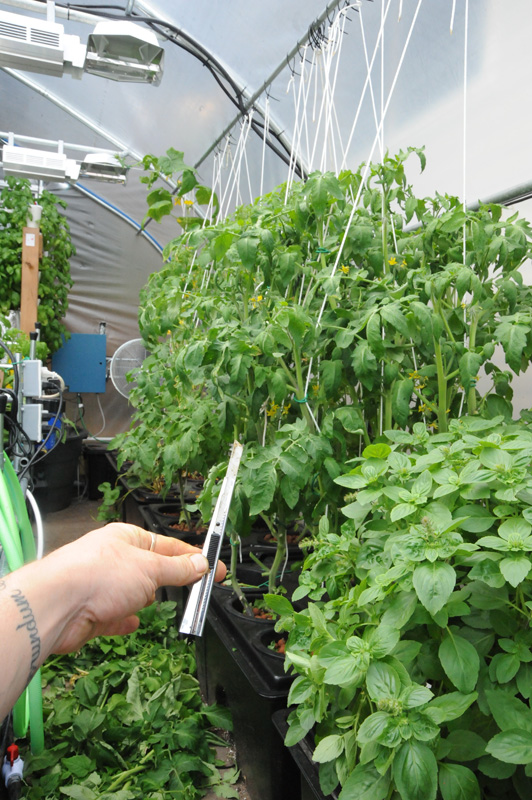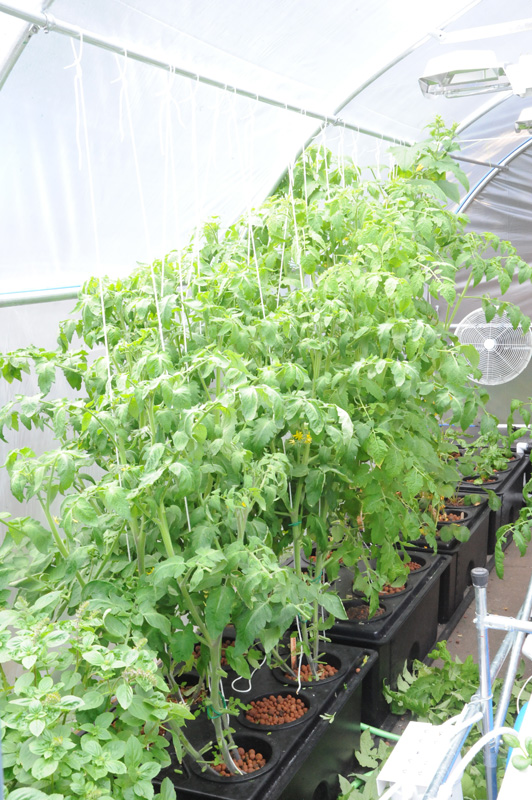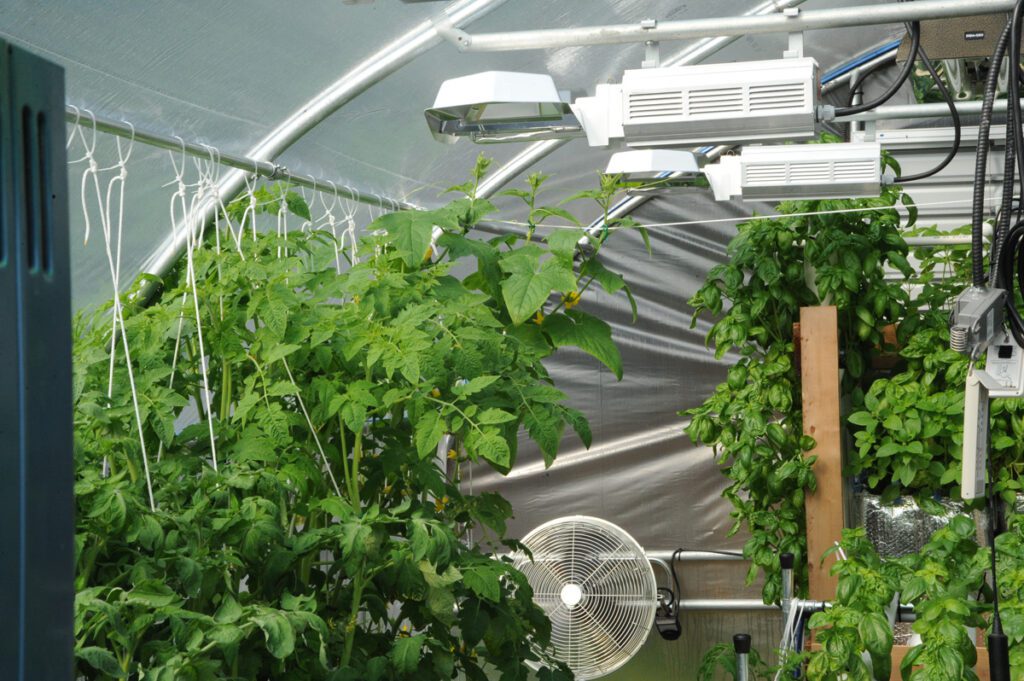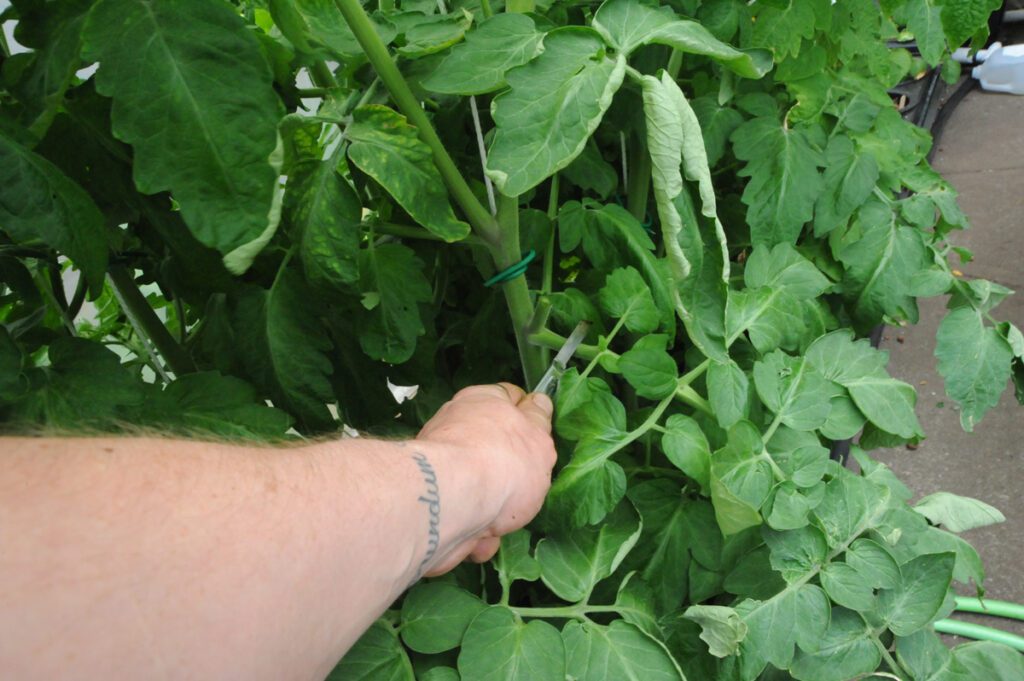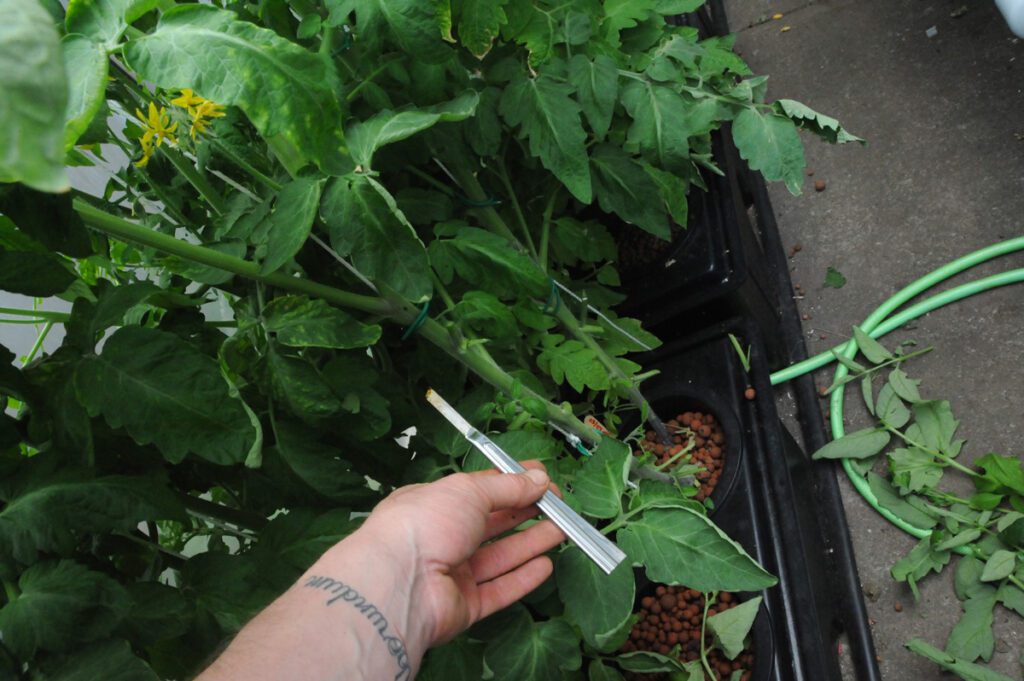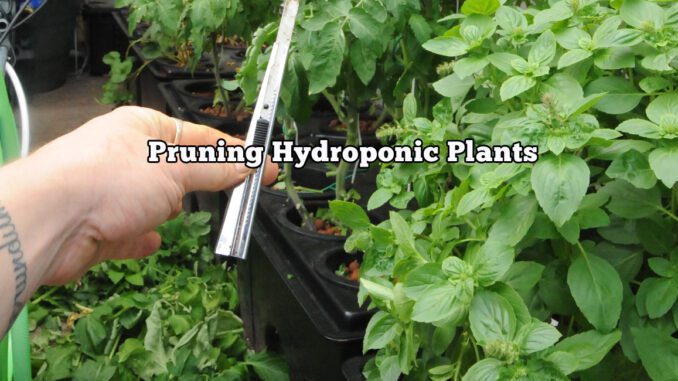
Pruning Hydroponic Plants
Trimming and Training for Bigger Flowers & Fruits
Pruning hydroponic plants is a virtually free and highly effective way to get more flowers and fruits from your crop, whether growing in hydroponics greenhouses, organic gardens and especially indoors growing under lights. Pruning hydroponic plants is especially important because growth can be so much faster and more pronounced; if you don’t stay on top of it, growth rates can get away on you, creating a jungle that’s much harder to manage. If growing indoors under lights, whether in soil or hydroponics, pruning is essential to ensure plants can make good use of the artificial lighting that is available to them.
Artificial light intensity from growlight sources like HPS, MH, T-5s and LEDS drops very quickly with the distance it travels, and does not penetrate dense plant canopies like natural sunlight can. It’s important to have the right number of branches and to make sure big water leaves aren’t shading the productive parts of the plant when growing indoors under lights. In greenhouses, an overly dense plant canopy hold lots of moisture, and for fruits like tomatoes or cucumbers, high humidity contributes to blossom end rot. If not managed, plant diseases or poor production could result. Flowers fall off before fruits can form, and excessive humidity also promotes issues with calcium in the crop. Further excessive branching creates stretchy and weak plants with smaller fruits and flowers that are more prone to insect or diseases issues.
Why Prune Plants?
- Allows more light to reach productive areas of the plant
- Opens up the canopy for better air exchange, ie oxygen out, carbon dioxide in
- Lowers humidity within developed plant canopy, water vapor can escape freely.
- More energy can be channeled by the plant into selected numbers of fruits or flowers for larger yields and better quality
- Light is distributed more evenly through plant canopy, ie top doesn’t get all the light while bottom is shaded
- Dense plant canopies with little air flow favor insects that can infest and harm crops
- Reduces incidence of moisture pooling on foliage, fruits or flowers which lead to crop diseases
What About Training or Staking Plants?
When pruning hydroponic plants, yields and crop health may also be further improved with staking or training plants. Plants being grown for high yields can develop a tremendous amount of weight relative to the branches that support it all. While good air movement helps keep plant growth sturdier, it’s usually a good idea to provide support to plants that will finish more than a two feet tall, as a rule of thumb. For stout bushes, simple tomato cages, whether DIY or store bought are effective and easy. After about four feet of crop height, most store bought cages won’t do the job, and growers may DIY their own cages or as in the case of professional greenhouse growers, trellis the plants with twine and clips.
Supporting plants with cages, trellising or staking helps crops put more energy into bigger fruits and flowers. Otherwise, plants need to use more of their available energy for growth thickening stems with cellulose and lingins–time better spent on the parts of the plants you prefer to harvest for health or profits.
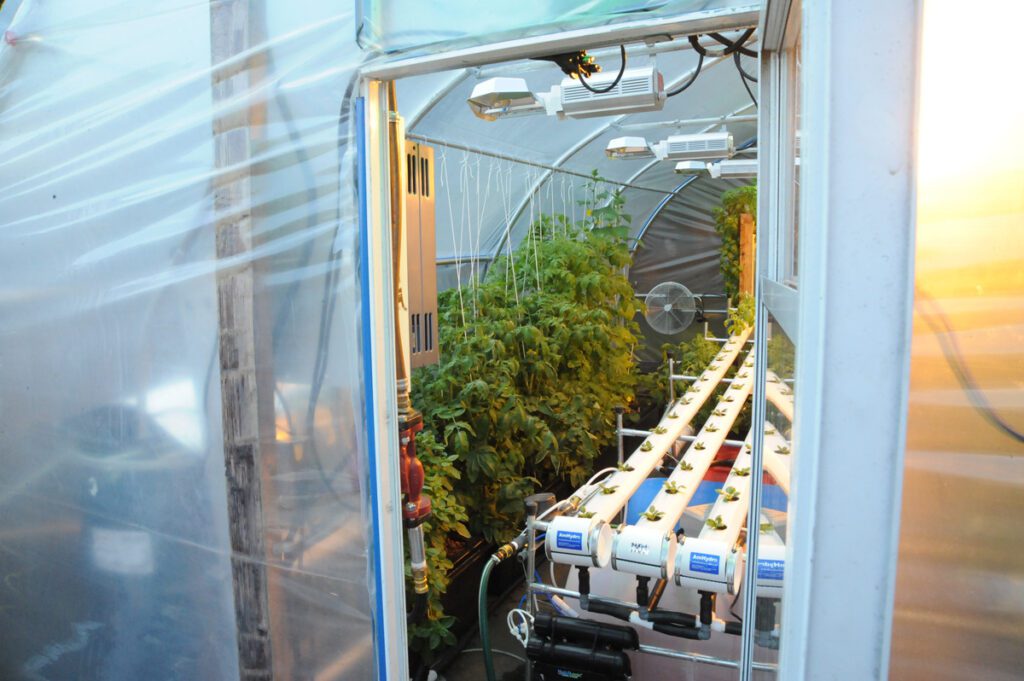
When to Prune:
Some growers will start pruning early, usually when they want to encourage busier growth, ie indoors under grow lights. In the case of tomatoes or cucumbers growing in the greenhouse or the garden, trimming, pruning and staking usually starts when the plants are about a few weeks old and growing healthy free of stresses; plants are usually at least a foot tall or more at this point.
What to Prune:
Any part of the plant that is not receiving strong and direct light should be considered a candidate for removal, with most plant types people grow at home as food or medicine. Foliage lower down and more in the center of the plant gets little light and just add moisture as water vapor where you don’t want it; remove excess leaves inside the canopy. Lower down on the plant, you may consider removing any branches or leaves on the entire lower 1/3rd of the plant height. Outdoors this is especially helpful because it eliminates “the bridge to problems” from ground level, ie wet soils, insects, pests. If training plants to grow as vines, usually any side branches are removed as they develop. Alternatively, side branches lower on the plant can be trained to grow towards strong light and can yield well, provided lower parts of the plant receive strong and direct lighting relative to the upper canopy.
How to Prune:
In pruning hydroponic crops, good hygiene and sharp instruments are recommended. Think of it as minor to major surgery for plants, depending on the extent you intend to trim or prune. A sterile razor blade handled with care is a good choice. TIP: several hours before you begin, feed your plants some B-Vitamins via nutrient supplement applied at the roots or as a light spray. This helps keep the stress and shock factor low and makes for a fast recovery. In professional greenhouses, it is not uncommon to see workers dipping their hands and trimming tools into milk as they move from plant to plant. This is said to help prevent the transfer of pathogens (disease causing organisms) from plant to plant. Typically, it’s best to prune just as the plants are entering their dark cycle, giving the crop a chance to recover before light stimulates the urge to grow again and puts a higher demand for water on the plant. When pruning bigger branches, professional plant wound sealing compound is available. This helps to seal up wounds to prevent any potential diseases or problems and helps the wound heal better.
More Pruning Hydroponic Plants TIPS:
- Try to limit the number of times you prune in the crop cycle, ie go hard fewer times rather than more frequent light prunings
- Growing indoors under lights, many strains respond well to a thorough leaf pluck in the fourth week of flowering or budding–remove all water leaves except for crowns
- In fruiting crop, you may limit the number of fruits per fruit set to promote higher quality and larger fruits
- Many types of crops have an optimal number relative to square footage and flowering or fruiting sites–research your variety to find yours
- Lower branches that are healthy when pruned away can be rooted as cuttings to produce plants for sales or production, aeroponics is great for this.
- Always dispose of plant material AWAY from the growing area right away. Decaying plant matter invites pathogens and insects.
- If using twine make sure that it is not prone to hold moisture and breed bacteria overtime
